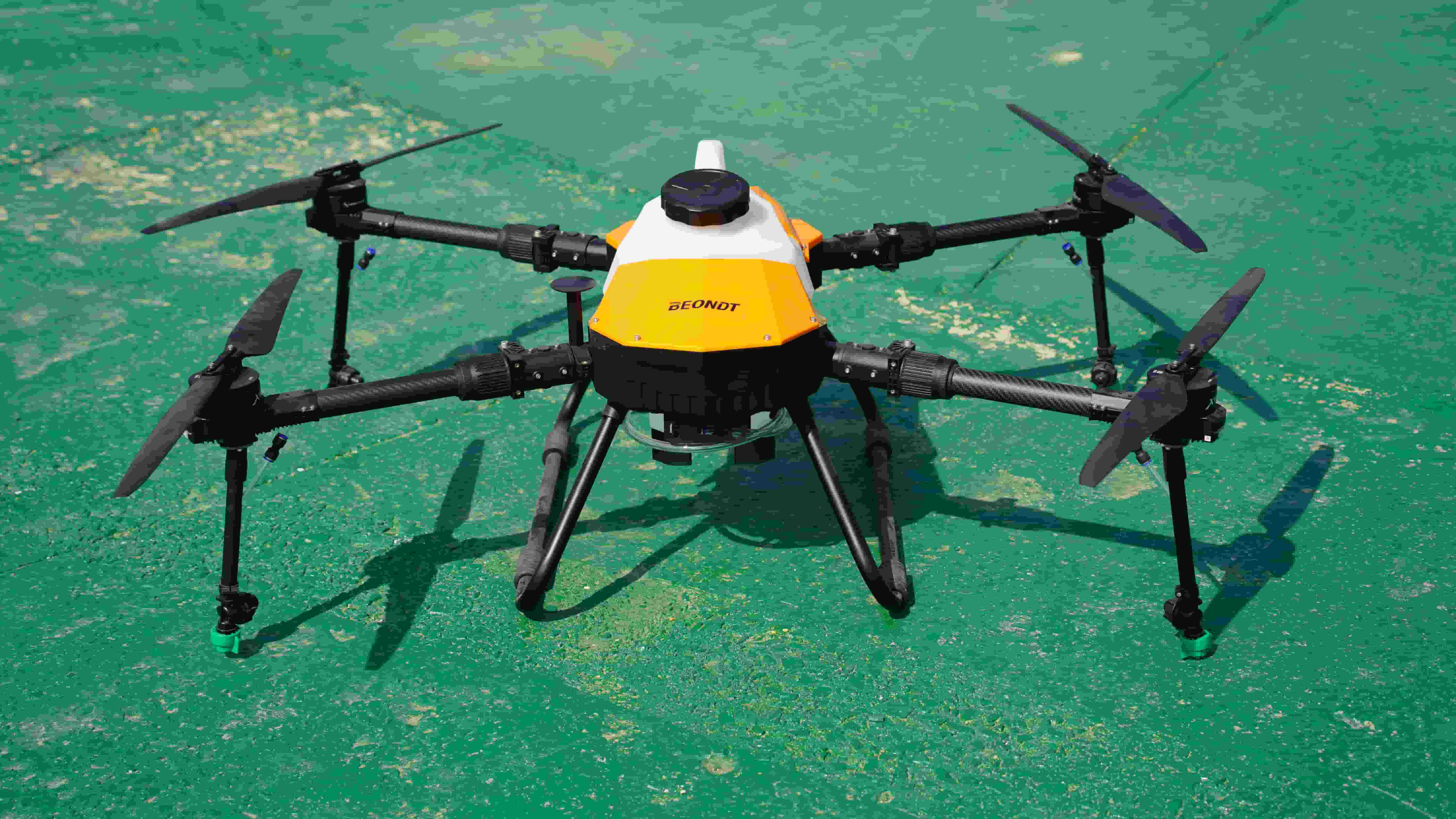Email :sales@beondt.com
"In 2024, low-altitude economy was written into the Government Work Report for the first time. Drones are one of the main carriers of low-altitude economic applications and are also the "pioneers" of low-altitude economic development. Agricultural drones are a field with high development maturity in the low-altitude economy." Yin Shijun, former chief engineer of the Civil Aviation Administration of China, said at a low-altitude economic conference held recently.
Zigui County, Hubei Province is a large agricultural county in the mountainous area. Using agricultural drones to lift navel oranges and spray pesticides has become the "standard configuration" for local fruit farmers. Winter is also the picking season for Zigui navel oranges. Looking from the Wangushi Dragon Boat Square in Guizhou Town, Zigui County, the fruit trees are full of heavy fruits. He Yichuan, a drone operator of Zigui Honglai Agricultural Service Co., Ltd., skillfully operated the handle. The DJI T100 agricultural drone lifted 85 kilograms of navel oranges from the centralized receiving point, transported them to the Dragon Boat Square 300 meters away, and then returned to the receiving point in less than 50 seconds. In the past, it took about 40 minutes to transport the fruit manually. Li Bo, deputy secretary of the Zigui County Party Committee, introduced that based on the average yield of 5,000 kilograms of navel oranges per mu, the comprehensive cost can be reduced by 250 yuan per mu through drone lifting. Based on the 400,000 mu of navel orange planting area in Zigui County, the proportion of drone lifting in Zigui County accounts for 30%, with an average cost reduction of 250 yuan per mu. The drone lifting function alone can save 30 million yuan.
At present, agricultural drones have evolved from the initial function of fruit tree pest control to today's multifunctional operations such as sowing, fertilizing, and lifting, and have fully penetrated into various fields of agriculture, forestry, animal husbandry, and fishery, promoting the integrated development of modern agriculture and low-altitude economy. The large-scale application of agricultural drones, with its advantages of safety, reliability, efficiency, flexibility, and low cost, has changed the limitations of traditional general aviation aircraft operations that can only adapt to larger plots, must be implemented by professional teams, and are costly, and has achieved a higher applicability for large and small plots.
"In 2024, policies to promote the high-quality development of agricultural drones will be implemented one after another, bringing new prospects to the drone industry." Cheng Zhongyi, an agricultural technology engineer at Shenzhen DJI Innovations Technology Co., Ltd., believes that the development of agricultural drones in my country may show two major development trends. On the one hand, the comprehensive cost of using agricultural drones will continue to decrease, and the unit price of transportation costs will decrease. On the other hand, the intelligence level of agricultural drones will continue to improve, and technologies such as lidar, visual recognition, AI, and AR will continue to be integrated into agricultural drones, further promoting agricultural cost reduction and efficiency improvement.
In line with the trend of scientific and technological innovation, Yin Shijun suggested that the construction of relevant talent reserves should be strengthened. In recent years, the Civil Aviation Administration of China has increased the training channels for agricultural drone pilots, giving more practitioners the opportunity to become pilots of agricultural drones. In the next step, we should make good use of resources such as drone colleges and drone majors in colleges and universities to continuously cultivate and deliver relevant talents.

Our hours
Mon to Fri: 9 AM - 7 PM (GMT+8)